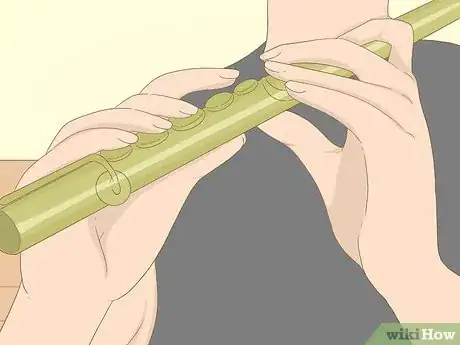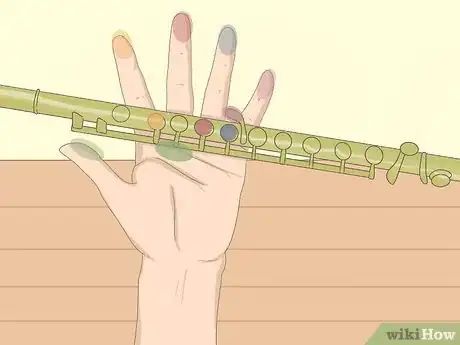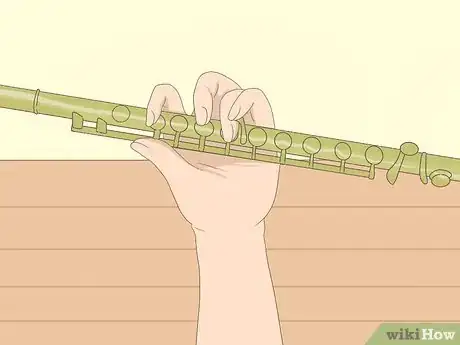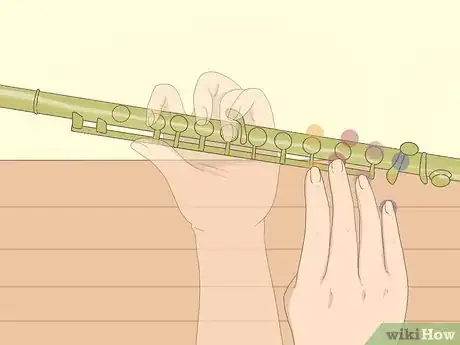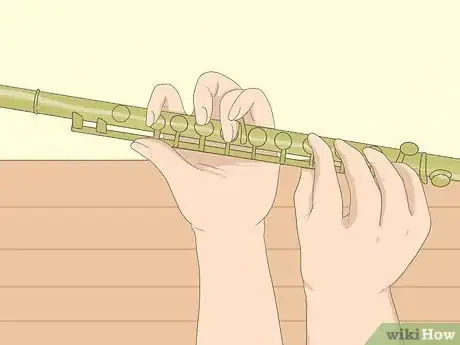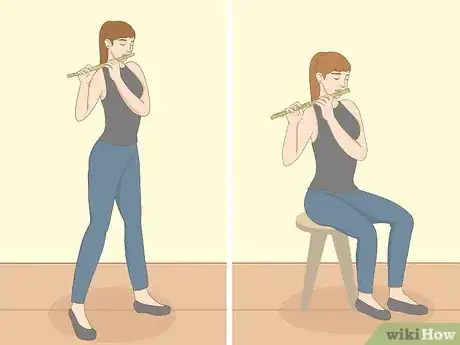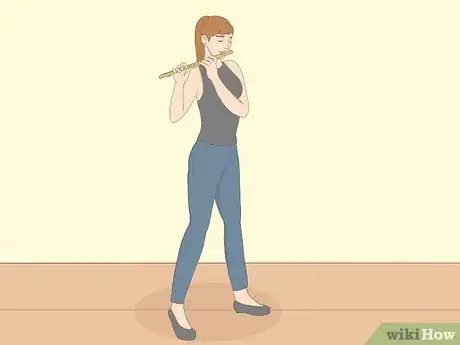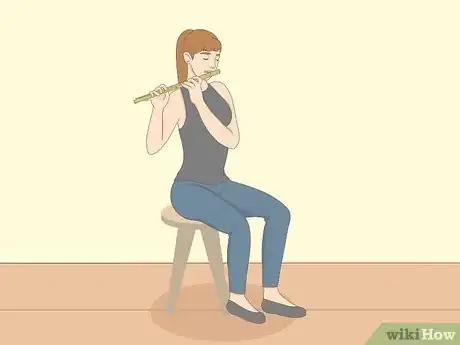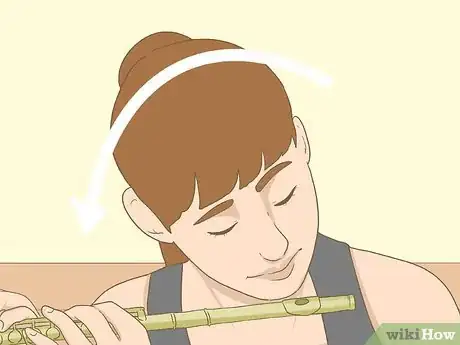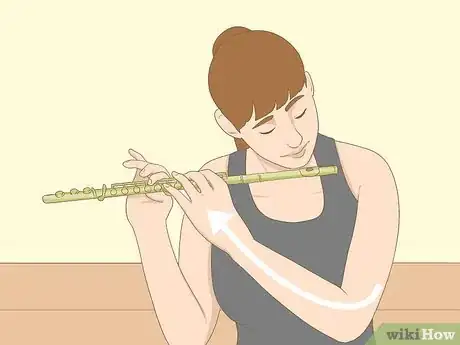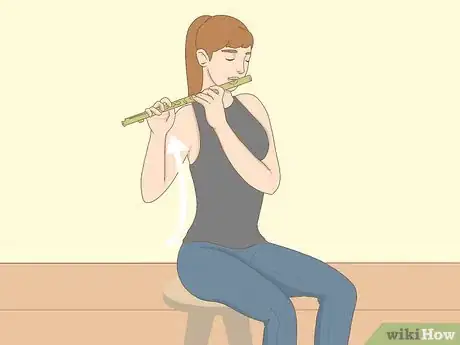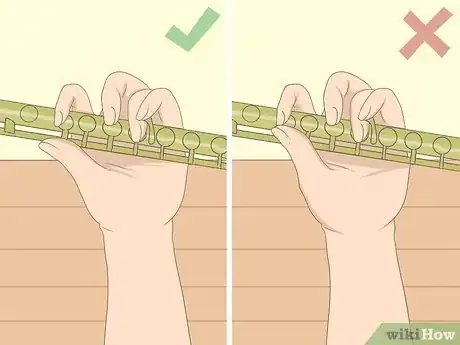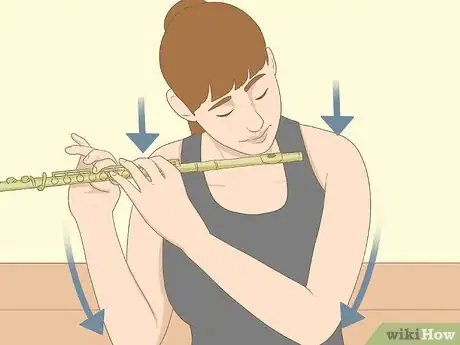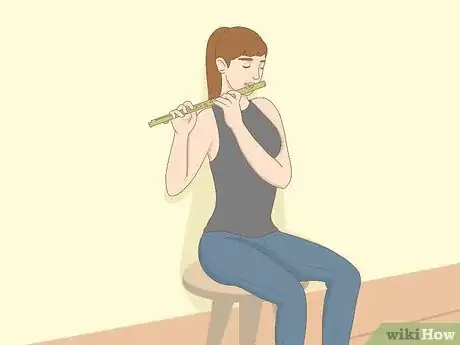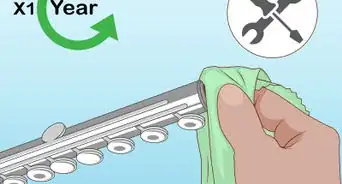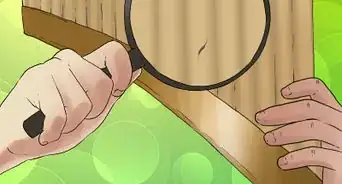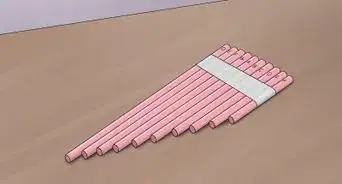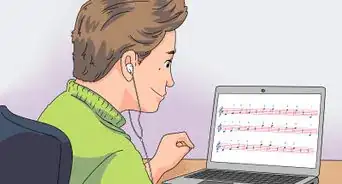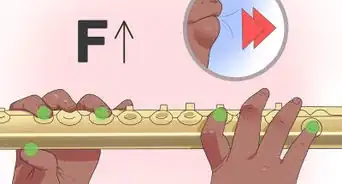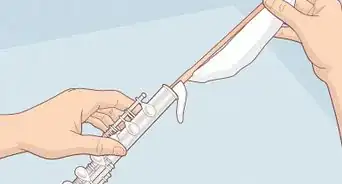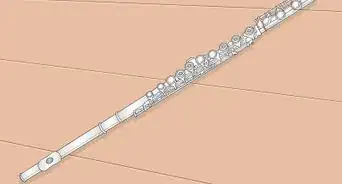This article was co-authored by wikiHow Staff. Our trained team of editors and researchers validate articles for accuracy and comprehensiveness. wikiHow's Content Management Team carefully monitors the work from our editorial staff to ensure that each article is backed by trusted research and meets our high quality standards.
There are 10 references cited in this article, which can be found at the bottom of the page.
This article has been viewed 20,404 times.
Learn more...
Holding your flute correctly can seem difficult because there are a lot of things to remember. If you practice your finger positions and body posture, you are well on your way to playing and feeling better. By learning some key tips, you will be able to reach your keys more easily, breathe better, and avoid medical problems. Flutists can have different ideas about how to hold the flute, so ask a teacher if one of the posture instructions doesn't work for your body.
Steps
Finding Your Finger Positions
-
1Hold your hand and fingers in a relaxed way, with your fingers curved. If you rest your hand along your body, you will notice your hand’s natural, relaxed arch. Try to maintain this arch in your fingers while playing on and lifting off a key. Straightening your fingers will tense your muscles and tire your fingers out![1]
-
2Place your left hand fingers on their resting keys. All of your fingers have “home keys,” or keys where they should always rest while you are playing. Try to memorize these keys.[2]
- Place your left thumb on the long, flat key located on the bottom of the flute.
- On the top of your flute, skip the first small key that is separate from the main flute keys. Place your left index finger on the second key.
- Place your left middle finger on the fourth key.
- Place your left ring finger on the fifth key.
- Place your left pinky finger on the next key, a small protruding side key.
Advertisement -
3Return your fingers to their home keys if you move them. For some notes, your finger will be pressing its home key, and for other notes it will be lifted off the home key. Sometimes, it will even play a different key! No matter what, though, your finger should always come back to its home key.[3]
-
4Place your right hand fingers on their resting keys. Now you’re familiar with the left hand finger positions. You can complete the positioning by finding your right hand home keys.
- Your right thumb doesn’t have a home key! Rest it on the bottom of the flute. Try not to protrude your right thumb: just keep it pressing down flat on the bottom of the flute.
- Luckily, the next three fingers of your right hand (index, middle, and ring) are easy. On the body of your flute, towards its middle, you will find three bottom keys. Place your index, middle, and ring fingers on these keys in order.
- Lastly, place your right pinky on the first small key of the foot joint, adjacent to those previous three fingers. This key looks similar to the key your left pinky rests on.[4]
-
5Hold the flute with only your fingertips, not your hand. Try to hold your flute with just your fingertips, not your whole hand. That means that, once you’ve found all your home keys, your fingertips should be the only thing holding your flute up.[5]
Getting Into Playing Position
-
1Decide whether to sit or stand while playing your flute. You will need to know both the standing and seated posture. If you play in an ensemble, you probably practice sitting down. Sitting is less tiring, but standing allows you to breathe and produce sound better. Regardless of which position you use, follow the same guidelines for head, arm, and back posture.[6]
-
2Stretch your left foot forward and your right foot to a 45 degree angle. Your left foot should be slightly ahead of you, while your right foot should be angled to the right. This is the standing posture. After completing these steps, your entire body should be tilted to the left. [7] Flutists never keep their bodies completely straight, as that will make it hard to produce a good sound.[8]
-
3Sit on a chair turned at a right angle with your feet about one foot apart. If you are sitting while playing, keeping your legs apart while make you feel more comfortable. Turning your chair slightly to the right will help you tilt your head to the left.[9] Having the right seated posture will be important when it comes time for you to give a recital.[10]
-
4Tilt your head to the left and bring your flute to it. Your head should be facing your music stand.[11] Make sure not to duck down your head to meet your flute. Instead, your flute should always meet your head.[12] This keeps your head relaxed and aligned with your shoulders.
- You can also imagine that a string is attached to the crown of your head, lifting your head up. This may help you remember to keep your head up, instead of leaning forward.[13]
-
5Push your right arm forward and your left arm towards your body. Imagine this as a balancing of forces when holding your flute. This keeps your flute firmly in place, instead of bobbing up and down.[14]
-
6Keep your back relaxed and upright, not slouching or straight. While slouching will negatively impact your breathing and playing, so will keeping your back completely erect. Aim for a back that is upright but relaxed. This can be uncomfortable at first if you tend to slouch.[15]
- Aiming for the right posture while playing the flute can also help you sit and stand straighter in daily life.
Avoiding Common Mistakes
-
1Prevent your right thumb from protruding past the edge of the flute. This is one of the most common problems that arise when holding the flute. It happens if you rotate your wrist too much to the left. Unfortunately, there is no single solution for everyone. Ask your teacher for an evaluation of the problem and they may offer several options based on your anatomy.
- Simply trying to remember to keep the thumb and wrist in place may work if you are a brand-new player and this is not the result of an underlying anatomical issue.
- You may need to purchase a Thumbport. This could be a solution if you have unusually shaped thumbs, either too thin or short, that are causing the problem. The device attaches to the bottom of your flute and keeps your right thumb securely in place.[16]
- Another potential solution is readjusting the flute headjoint. Ask a teacher for help with this. Adjusting the flute could allow you to create the right balance between the parts of your arm and flute, which will correct your wrist and thumb issue.[17]
-
2Keep your elbows and shoulders down while playing. You may push your shoulders up while playing without even noticing it! This can cause a lot of tension in your shoulders.[18]
-
3Avoid moving your head forward by practicing against the wall. You may also push your head forward while playing, another common mistake. Try playing with your back and head against the wall until you remember the feeling of staying in line.[19]
References
- ↑ https://www.8notes.com/school/lessons/flute/holding_the_flute.asp?show=all
- ↑ https://www.youtube.com/watch?v=SLO0WkLXwfo
- ↑ https://www.youtube.com/watch?v=SLO0WkLXwfo
- ↑ https://www.youtube.com/watch?v=SLO0WkLXwfo
- ↑ https://www.8notes.com/school/lessons/flute/holding_the_flute.asp?show=all
- ↑ https://hannahbflute.com/2019/03/18/sit-or-stand-to-practice/
- ↑ https://www.youtube.com/watch?v=BNy-Ibz2j8s
- ↑ https://www.youtube.com/watch?v=8U-5nrHjuUw
- ↑ http://www2.oberlin.edu/faculty/mdebost/may96.html
- ↑ http://www.flutepage.de/deutsch/goodies/physiologie.php?englisch=true#haltung
- ↑ https://www.youtube.com/watch?v=8U-5nrHjuUw
- ↑ https://www.youtube.com/watch?v=WWsUZZgun50
- ↑ https://www.youtube.com/watch?v=WWsUZZgun50
- ↑ https://www.youtube.com/watch?v=8U-5nrHjuUw
- ↑ https://www.smartmusic.com/blog/flute-technique-awkward-right-thumb/
- ↑ https://www.jennifercluff.com/pinky.htm
- ↑ https://www.smartmusic.com/blog/flute-technique-awkward-right-thumb/
- ↑ https://www.youtube.com/watch?v=8U-5nrHjuUw
- ↑ https://www.youtube.com/watch?v=8U-5nrHjuUw
